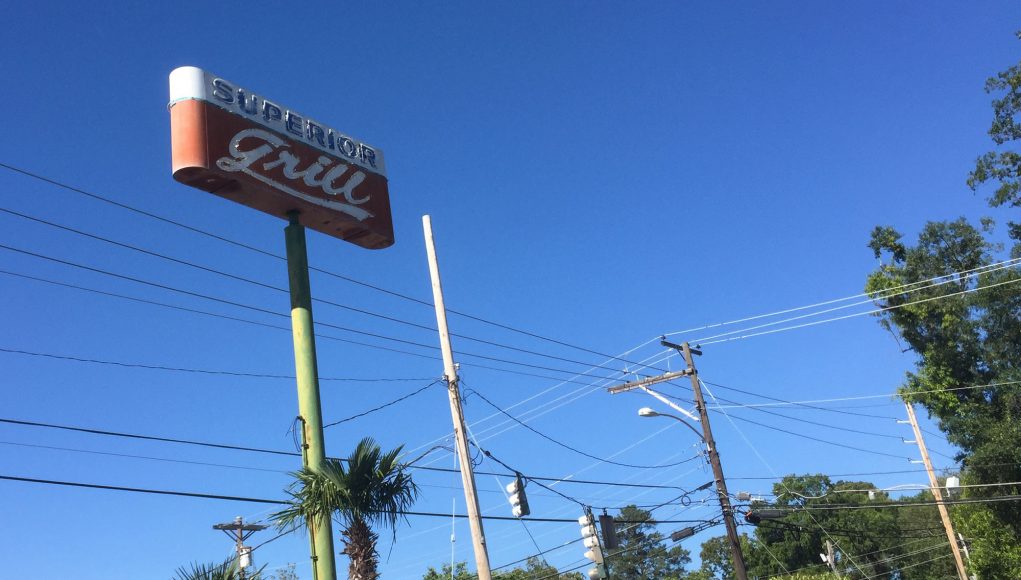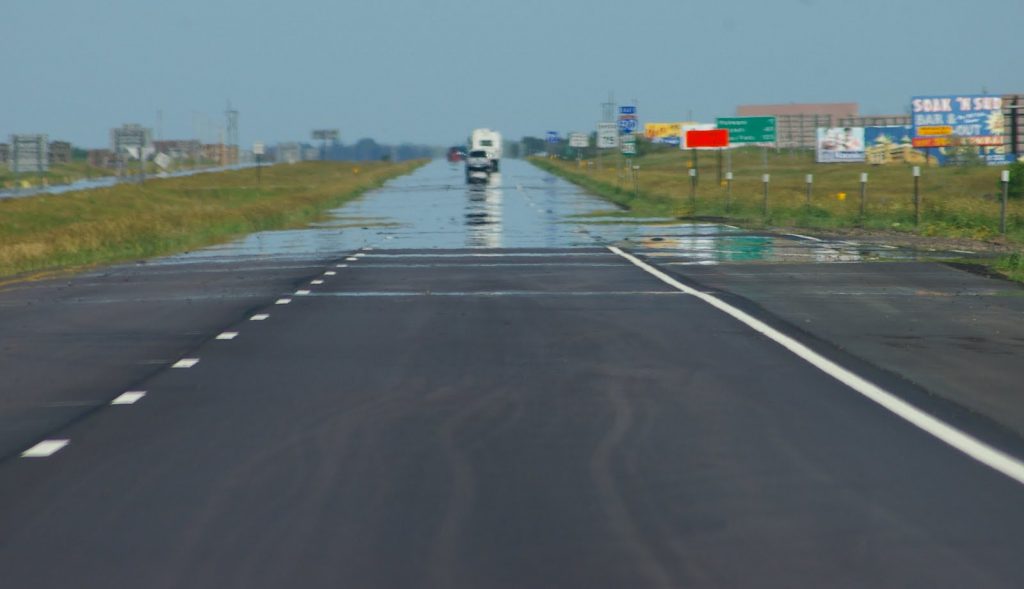Introduction
The Shreveport-Caddo Metropolitan Planning Commission board has pushed a contentious appeal to the Shreveport City Council Tuesday, May 22 (505 Travis Street) for a vote. The appeal, which pits Superior Grill – a local favorite since 1983 – against their neighbors adjacent to the restaurant, focuses on an effort by Superior’s owners to create more parking for their restaurant on Line Avenue.
The story goes like this: Superior Grill purchased two homes behind their property and demolished the houses to make room for more parking. The properties are currently zoned as residential and Superior wants the city to rezone them for use in a business capacity (parking lots). Instead of arguing the pro-business vs. resident rights narrative (both of which have merits to some extent), we’d like to take this opportunity to talk about some of the likely real-world impacts to the neighborhood, how this relates to best practices in development, the Shreveport-Caddo Master Plan, and what we can do to find a sensible solution.
To achieve this, we have turned to ReForm Shreveport, a community engagement group with a focus on city development and land use, for advice. Contributing to this article are Tim Wright, civil engineer and founder of ReForm Shreveport, and Taylor Scheinuk, recent graduate of the University of New Orleans with a degree in Urban Studies and Economics. With the insight of their experience and education, we hope to provide a fresh perspective on how planning should be impacting neighborhood decisions like these.
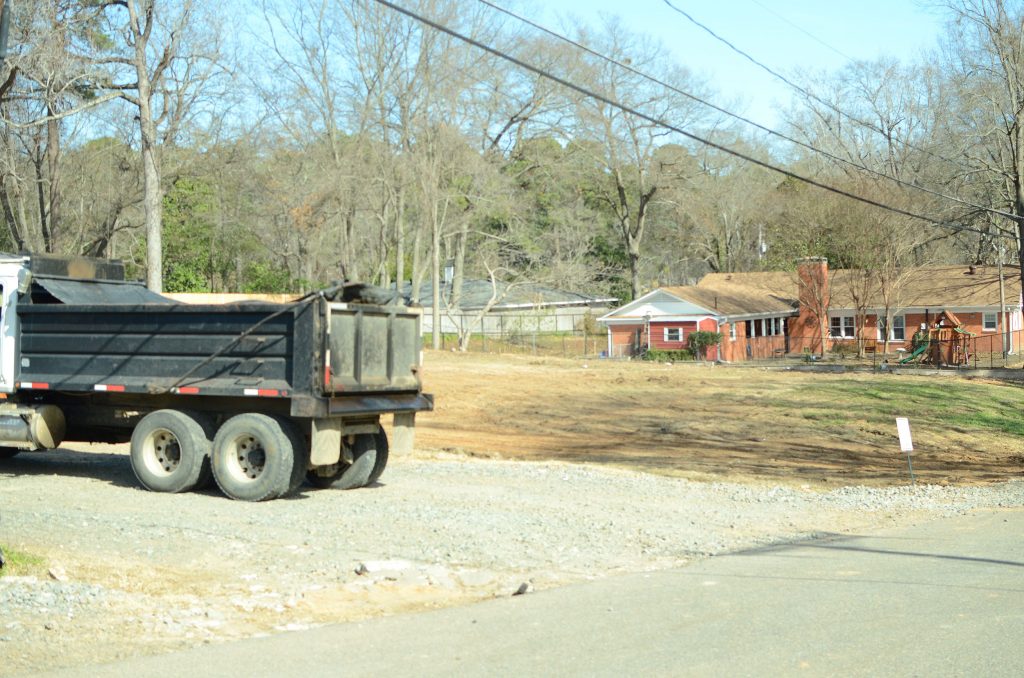
The Ever-Present Parking Debate
Parking seems to be at the center of many arguments about development today. The recent Unified Development Code town hall meeting hosted by the Greater Shreveport Chamber of Commerce highlighted parking lots as a point of contention. We’re so used to parking lots being part of our everyday routine that sometimes we forget that they aren’t just pavement and paint. Just like anything else we build in a city, parking lots have effects on the property and environment around them. Many of these impacts are not widely understood by the public and are often considered (mistakenly) by councils and commissions to be more trouble than their worth. For a city trying to get back on its feet and find an identity, that is a problem.
Some of these parking-related effects are easy to spot once you know where to look. The most obvious is visual impact. A large expanse of concrete or asphalt isn’t exactly a master class in aesthetics, no matter how many shrubs and Crepe Myrtle trees developers (at the behest of planning commissions) shoehorn in-between spaces. However, there are other less obvious effects that come into play that most people don’t notice, mainly because they’re not something the average citizen should have to worry about (because it’s the job of the city), and that’s what we will be spending the middle portion of this article talking about.
The Heat Island Effect
This being the South, it gets…well…’hot’ in the summertime. This is probably on the same level of breaking news as an announcement that water is ‘wet’. However, heat is a big concern for cities, where most of the land has been modified in some way. Most of us remember playing outside as kids. As you remember streets and driveways stayed warm, like an oven door, well past sunset. At the same time, you might have noticed that the grass just six inches over grew cool almost immediately after being cast in shadow. This trapping of heat in the pavement and other hard surfaces is what is known as the ‘heat island effect.
Because of the trapped heat, it is estimated that 5-10% of the demand for electricity in an urban community, like Shreveport, is drawn solely to compensate for the heat island effect. Air temperatures in cities, especially just after sunset, can be 10-20°F warmer than nearby rural or natural areas. It also has a profound effect during the daytime hours as well and can make it downright miserable to be outside.
Parking lots are an important factor in trapped heat. Their effect can be extremely localized too, like the house next door, and varies wildly through a community depending on how much heat the immediate area can absorb. These factors can lead to noticeable increases in electricity bills in the summer for nearby property and homeowners. Yes, this is just one parking lot, but the cumulative effect of these decisions adds up.
Stormwater Runoff
Hard-paved surfaces have another side-effect that presents a much more noticeable danger to our communities: stormwater runoff.
If you think about it, covering the ground with a material like concrete or asphalt means that almost any rain that falls on it will end up in the storm drains instead of soaking into the ground as nature intended. This can put additional strain on the drainage system as well as lead to water runoff directly into adjacent properties which can contribute to erosion. Our cities already generate massive amounts of runoff and it can be a real problem. New Orleans is the easiest problem child to pick on in this respect, but we’ve also seen in recent years how human alterations to how rainwater moves on the ground have flooded whole communities in cities like Baton Rouge and more recently with Hurricane Harvey in and around Houston, TX.
There are ways to reduce, eliminate, or slow runoff from surfaces like parking lots through design; in fact, the new UDC requires new developments to have Stormwater Management Plans, but it’s not clear if this property will be classified as a new development which would determine if it will be required to have stormwater management. If not, this property as a parking lot instead of a home will put a greater strain on the city’s infrastructure and taxpayers will essentially be paying for the additional damage over time, as they do with every area that adds workload to the drains.

Taxable Property Changes
While parking doesn’t contribute directly to sales taxes (assuming the parking is free of charge), Superior Grill’s argument seems to be that a new parking lot will increase sales tax revenue through serving more customers. Ultimately, the taxable property value in real dollars will be less than it was when there was a valuable home built on it, that much is clear. However Superior would argue that this drop in property tax will be offset by the additional sales tax generated at the restaurant (only a portion of which goes to the City of Shreveport). However, the restaurant reportedly is not adding more seating and the wait during peak drinking and dining hours can be well over an hour as it stands today. So, at least at first glance, that claim doesn’t pass the sniff test, though we’d be open to seeing their data.
In the spirit of our exploration of the issue, our question is this: Could there be a way to use that property more efficiently? Or could there be a better solution that doesn’t require changing the residential property to business property?
Existing Parking Availability
According to a quick area measure on Google Maps, Towne Oak Square shopping center on the Southwest Corner of Line Avenue and Pierremont Road does a better job of conserving parking than Superior Grill does. Towne Oak contains Superior Steakhouse, Brewniverse, Another Broken Egg, Tejas, Oyster Bar, Baskin Robbins, South Highlands Pizzeria, but also non-restaurant businesses like Sprint, H&R Block, financial and medical services as well as a fitness center. It has approximately 2.3 acres of retail space and 2.9 acres of parking. This gives us a land use ratio of 0.8 retail space to parking space.
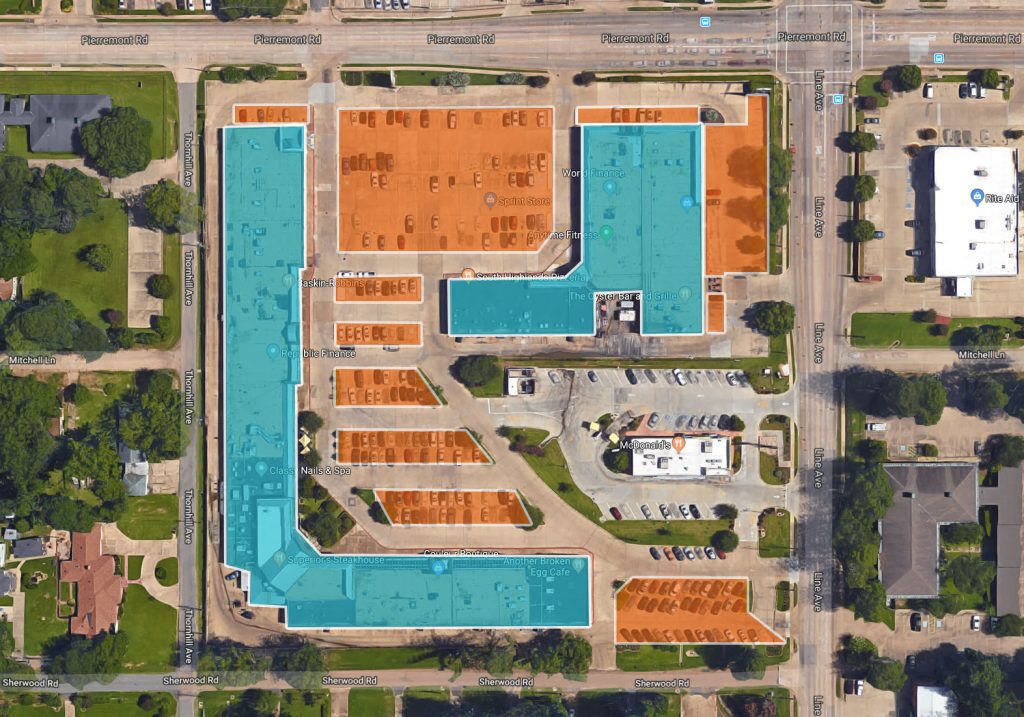
That’s not a good ratio by urban standards (more parking than should be needed), but when we look at the area that Superior Grill sits on (image below), if the city did grant them the right to expand their parking, the lot would be comprised of 0.25 acres for retail space and 1.5 acres for parking. That means a whopping six times the land use is used for parking than for retail. All things considered, it’s not the best use of land even from a direct parking lot to parking lot comparison.
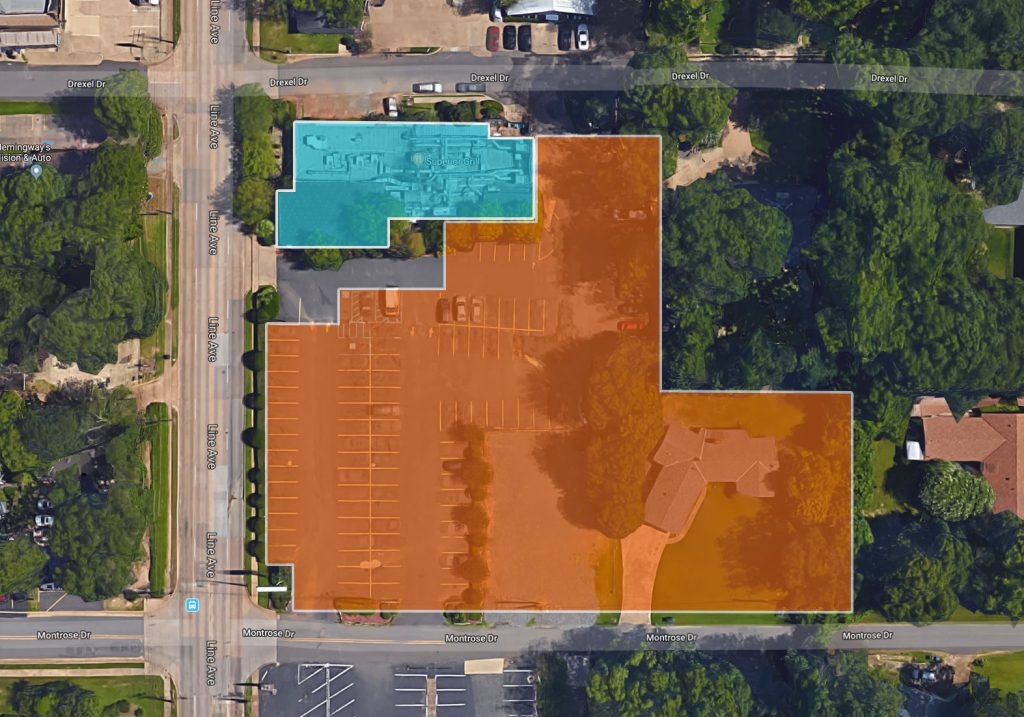
The obvious reason for the disparity above is this: parking in Towne Oaks businesses use the shared parking during different times throughout the day. The cell phone store won’t have as many customers during dinnertime. Or Baskin Robins won’t need the lot when Another Broken Egg is serving up breakfast. This makes for a healthy balance of the parking space usage. Superior Grill’s parking, however, is used only during high times at lunch and dinner, and not used much at other times because no other business types are adjacent.
If we accept that a parking lot with a single business use is not the most efficient use of space (on top of the other concerns we have raised), there may actually be a solution available to us that requires no new parking lots at all and could still increase bandwidth for Superior Grill by more than what it wants to build!
Today, Superior Grill currently has over 100 parking spaces, not including handicap access spots. Across the street from the restaurant, there are about 150 additional spots at the SWEPCO building (6300 Line Avenue) which aren’t used very much on nights and weekends – peak times for Superior Grill. This means the needs for parking between SWEPCO and Superior are complementary. During the busiest times of the restaurant (nights and weekends), SWEPCO uses the parking lot far less as its employees are mostly off work during those times.
The city could, or the private businesses could on their own, spearhead a park sharing agreement that would increase capacity with none of the above downsides. Sharing parking isn’t unique in Shreveport. Businesses like Great Raft Brewing and others in the west edge of downtown Shreveport share private business lots that are vacant on evenings and weekends to expand capacity without building anything new.
Lastly: Master Plan Incompatibility
Shreveport-Caddo’s Great Expectations 2030 Master Plan calls the area around Line Avenue and Pierremont an “urban village“. A nationally-recognized definition, an urban village is “typically characterized by a medium-density housing, mixed-use zoning, good public transit and an emphasis on pedestrianization and public space.”
The core tenets of an urban village include:
- Reduced car reliance and promotion of cycling, walking, and transit use
- People working, recreating and living in the same area
- Facilitation of strong community institutions and interaction
Using this definition and tenets, it could be reasonably argued that we should be building up (instead of tearing down) housing and making the area more useful for pedestrians while de-emphasizing the use of cars. To accomplish this mission and to preserve the existing housing, businesses like Superior Grill should be encouraged to share parking with neighboring properties, and, if crossing Line Avenue is necessary, the city should be investing in pedestrian safety improvements like speed bumps, lighting, and signage.
Part of the trouble is that we don’t have a system or a culture in place to facilitate sharing spaces or thinking deeper about how to solve problems that create the least impact on our neighbors and that is conducive to building a more safe and efficient community. Ultimately, the MPC has been tasked specifically with implementing the Master Plan using the city codes and enforcement, as well as a body that should be working to come up with creative solutions to prevent stifling business growth or nudging into residential areas. Unfortunately, in this case, the MPC board punted this decision to the city council instead of adhering to the very Master Plan they are meant to implement.
Summary
We hope you have learned something new about challenges and potential solutions surrounding this debate. We wrote this article not to harp on one particular business’ attempt to expand, but to use this as an opportunity to explore how we can think deeper and better about ways to implement our values and achieve the goals that we have as a community in a way that benefits everyone and keeps our neighborhoods intact. After all, that’s what planning and the blueprint of a Master Plan are supposed to do in the first place.
This problem has solutions for some of the technical issues like the heat island effect and stormwater runoff if the city council decides more parking is truly needed. However, those solutions should not be required in this case because there is a creative solution (shared parking) available. This solution has proven effective elsewhere in Shreveport and provides the most value with the fewest downsides and preserves the adjacent neighborhood’s status as a place for homes. Who knows, it may not work out to share parking with SWEPCO, but the business and the city owes it to the community to try to find a better way to solve this problem.
Edit: A pervious version of this article miscalculated the amount of space the proposed Superior parking lot would take up, mistakenly saying it was eight times larger than the retail space instead of the corrrect six times as much space for parking compared to retail.

